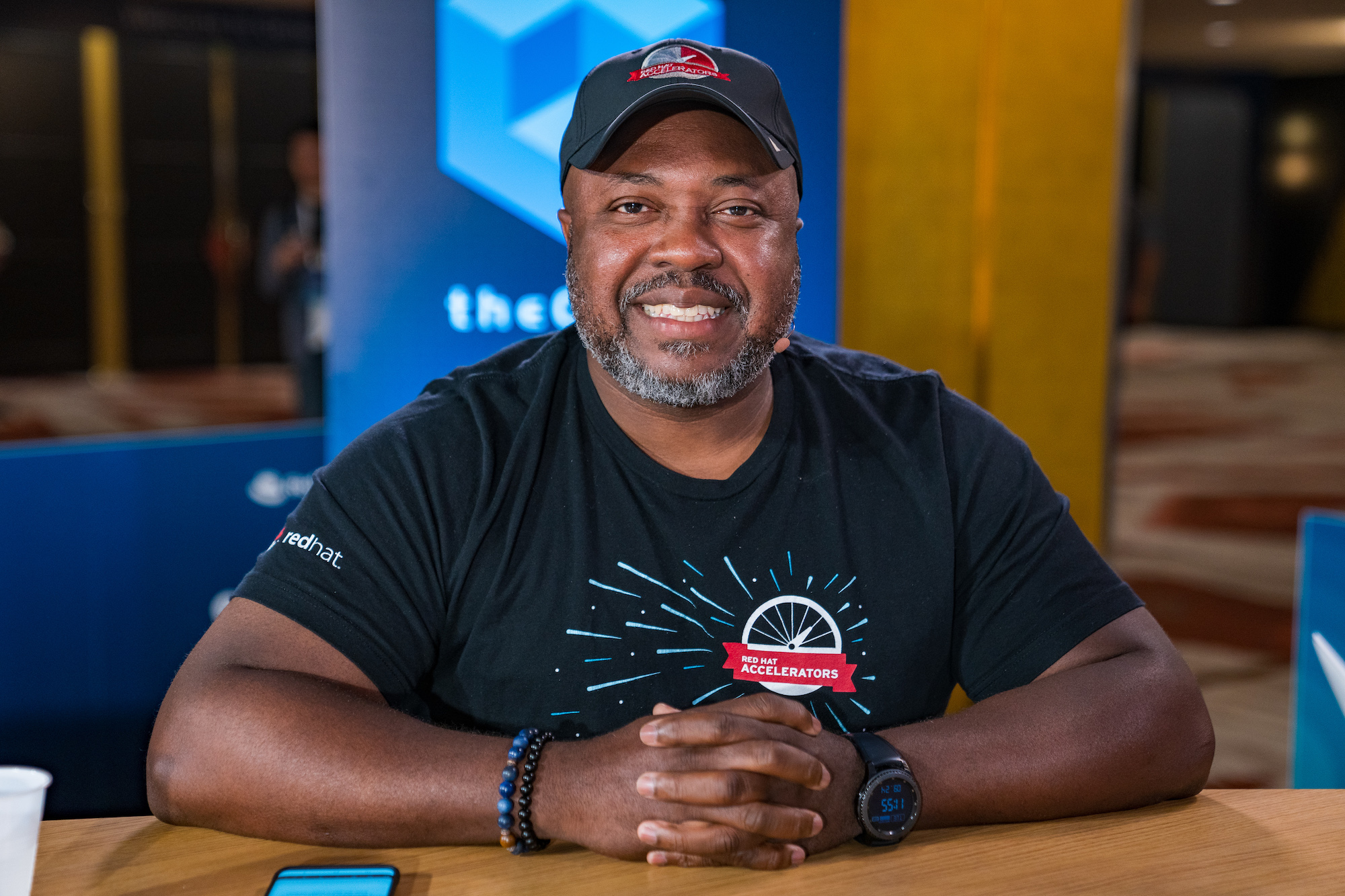 INFRA
INFRA
 INFRA
INFRA
 INFRA
INFRA
Business conflicts are inevitable. Disagreements and finger-pointing eventually happen within organizations, leading to lower productivity and business disruptions.
But in today’s digital world, improving culture and creating peaceful workplaces within enterprises is now possible with a single click of a button. Southern Co., a top energy provider, has been automating certain workflows that help the company resolve business conflicts. And with a little help from Ansible Automation Platform and certain configuration playbooks, the energy company has improved workflow and created greater opportunities for success, according to Abraham Snell (pictured), senior IT analyst of infrastructure at the Southern Co.
“The problem with [conflict] is it slows the business down,” he said. “So, at the end of the day, what we’re all there for happens a whole lot slower because we’re back and forth and we’re in conflict. So, what automation does is it literally speeds up what we need to be doing. It also helps us to be friends along the way.”
Snell spoke with John Furrier and Stu Miniman, co-hosts of theCUBE, SiliconANGLE Media’s mobile livestreaming studio, during the AnsibleFest event in Atlanta. They discussed Ansible playbooks and automation in business conflict and culture (see the full interview with transcript here). (* Disclosure below.) Answers have been condensed for clarity.
Miniman: I’m assuming that you’re undergoing some kind of journey. Bring us back to where things have been going.
Snell: I heard about Ansible during a time when we were trying to automate our patch process. So, our patch process was taking about 1,900 man hours per year. So it was highly manual. And then in a sales meeting, we heard about Ansible because that was the direction that Red Hat was going. So, I looked it up and learned about it. And the other thing: The barriers to entry were so low. It’s modular; you can jump in and start learning. You can write a playbook without knowing everything else about Ansible.
So, we reduced that [process] to about 70 hours a year. It was a massive reduction in the amount of time that we spent patching.
Miniman: Have you been expanding Ansible? Where’s it going from your footprint?
Snell: As an OS platform group, we are doing deployments now with Ansible. I pretty much do everything with Ansible. Honestly, someone just asked me to deploy some files; I was like, “Yeah, I’m going write an Ansible playbook for that” or use one that we already have. So, now we have other groups — the database folks are now using Ansible to patch their databases, and the network folks have been asking us questions. From my standpoint, I think we should expand Ansible.
Furrier: Automation drives job satisfaction. Tell me about that.
Snell: So, a few ways that just come to mind immediately. One is, I have a greater opportunity for success because it’s going to work the same way every time. The second thing is, it kind of gives people options. We tend to want options around the when, the where, sometimes even the how, and so automation can actually do that. And the third thing is, it really does free us up to do important stuff.
Miniman: Infrastructure used to be the boat anchor that prevented you from responding to the business. It was like “Can you do this? Yeah, I’ll get to it in the next six to 12 months, maybe if we have the budget and everything.” How does automation help you respond to the business and be more a group of yes?
Snell: With automation, what we’re seeing is there’s a lot of things that we can do, because one of the things you don’t want to happen in infrastructure is create a task that I can never get rid of. But, now, if it becomes a push-button item and I can do it consistently every time, it’s like hell yeah! Why don’t we do that?
Furrier: You’ve been on this wave, and it’s going to be bigger behind you. The cloud’s coming, a lot more scale, a lot more software, a lot more applications. What’s your big takeaway?
Snell: I’ve been doing this 23 or so years, and I never thought that there would be a tool that could really change and affect culture the way it has. Automation helps my job in ways that are not technical. It helps me work better with other teams. Now there are networks of folks that I work with whom I never would’ve worked with before who are doing automation.
Here’s the complete video interview, part of SiliconANGLE’s and theCUBE’s coverage of AnsibleFest. (* Disclosure: TheCUBE is a paid media partner for AnsibleFest. Neither Red Hat Inc., the sponsor for theCUBE’s event coverage, nor other sponsors have editorial control over content on theCUBE or SiliconANGLE.)
THANK YOU